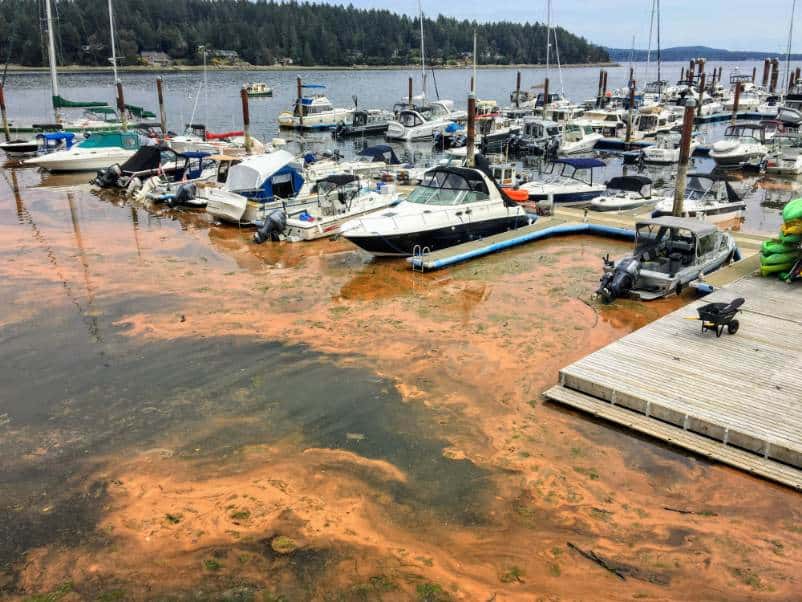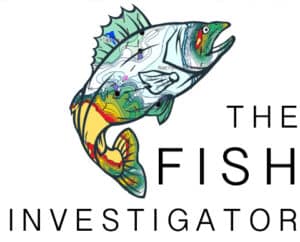
As an avid fisherman in Southwest Florida, red tide has been a rising concern for the health and safety of humans, fish, and other marine species. As the presence of red tide has increased in severity and length over the past couple of years, anglers are beginning to have more questions regarding the algae bloom, including if they can fish during the bloom and how it may affect their next fishing adventure.
Can You Fish During Red Tide?
Most anglers continue to fish during red tide, but it is common to experience decreased fishing action throughout the fishing day. Fishing regulation authorities rarely suspend fishing, but many municipalities enact a temporary catch and release protocol to protect certain species populations.
Let’s take a deeper look at Red Tide and how it may affect your next fishing adventure.
As I am writing this article, Naples, Florida, a thriving fishing town in South Florida, is fighting the infamous algae bloom currently wreaking havoc on our local marine ecosystems. Though many anglers, specifically commercial fishermen and private fishing guides, continue to fish during these blooms, their fishing numbers (amount of fish successfully landed decreases drastically.) As of this writing, no municipalities have put a temporary moratorium on fishing, but many local authorities have issued a temporary ban on harvesting certain fish species, including; Sea trout, snook, and redfish. The temporary moratorium is being brought into effect to protect species populations giving them a fighting chance during these difficult times.
What Is Red Tide?
Ride Tide is a harmful algae bloom that occurs predominantly in the coastal waters of South Florida. During the bloom, harmful algae (K.Brevis) emit toxins into the water, which slowly deplete available oxygen in the water column forcing fish to either move or die from lack of oxygen. Many marine biologists believe there is a direct correlation between fertilizer runoff and the severity of the blooms. It is important to note that not all algae are harmful. Rather most algae species are necessary for biodiversity and overall ecosystem health. When moderate to extreme cases of red tide hit the shores of the gulf coast, dead fish can be found littered along the beach shore. Scientists have recorded an increase in severity and length of blooms over the years.
Does Red Tide Affect Fish?
Red tide dramatically hurts fish populations in the areas affected by the bloom. The harmful algae bloom either causes the fish to migrate or kills them altogether. We conducted a study with 50 local fishing guides in Southwest Florida that reported a decrease in overall fishing activity during the blooms by 67%. During our survey of local guides, many stressed the noticeable decline in species population over the years as red tide has become a rising concern along the Gulf Coast.
Does Red Tide Hurt The Fishing Industry?
Red tide has significantly hurt the fishing industry. A survey we conducted with 50 local charter captains showed a direct correlation between red tide and the number of fishing charters booked monthly. Our findings indicated a decrease in bookings by 57% when the red tide was at a moderate to severe bloom.
Can You Eat Fish During Red Tide?
Fish can be consumed during red tide as long as they are not showing any signs of distress. Marine animals showing distress indicate a possible health concern to both fish and angler alike.
If you plan to keep fish caught during red tide, exercise caution by filleting the fish completely without disturbing any organs. Many fish store a large percentage of the toxins in the organs, making it necessary to avoid exposure. If you suspect any possible issues with the fish’s health, it is recommended to release the fish back to the water as soon as possible. This will ensure no further distress to the fish or risk and limit the chances of experiencing adverse health effects from consuming toxic seafood. If you consume seafood affected with red tide, typical side effects include neurological distress and gastrointestinal issues that typically subside in a couple of hours after consumption. It is essential to mention that many authorities will temporarily close down certain species from being harvested at this time. Before getting out on the water, check with local authorities to see if any fish have been placed on a temporary harvesting pause.
Does Red Tide Smell?
Red Tide smells like a mixture of sulfur and rotting fish. As portions of the algae bloom, die off, hydrogen sulfide is released into the air, causing a putrid sulfuric smell.
How Long Does It Take For Red Tide To Go Away?
Red tide typically goes away within 3 to 5 months after initial bloom, but some blooms have lasted over 12 months in recent years, causing significant ecological damage in affected areas.
There have been recent findings that high precipitation levels may decrease red tide severity and length in coastal environments.
Where Is The Best Place To Fish During Red Tide?
As a general rule, the best place to fish during red tide is offshore approximately 50 miles plus or in an adjacent fishing location with lower bloom levels.
As of the writing of this article, Tampa Bay is experiencing extreme levels of red tide, where many areas in clearwater are currently experiencing low levels of algae bloom, making clearwater an obvious choice to increase fishing productivity.
What Does Red Tide Look Like?
Red tide looks different depending on the severity of the current bloom. In severe cases, the water often looks like a brownish-red milky liquid suspended in the water column. In mild to moderate red tide cases, the watercolor changes slightly to an orange hue with decreased water clarity due in part to increased suspended solids in the water.
So now that you are familiar with Red Tide, you are probably wondering what, if anything, you can do to help!
Take a look at the shortlist provided below!
How Can We Stop Red tide?
1.) Reducing individual water runoff from inadequately maintained irrigation systems.
2.) Pick up after your pet! Dog feces are incredibly high in nitrogen, feeding further algae growth.
3.) Transition to native landscaping for your home that does not require synthetic fertilizers for optimal health.
4.) Educate local government officials on the severity of this matter and advocate for change.
